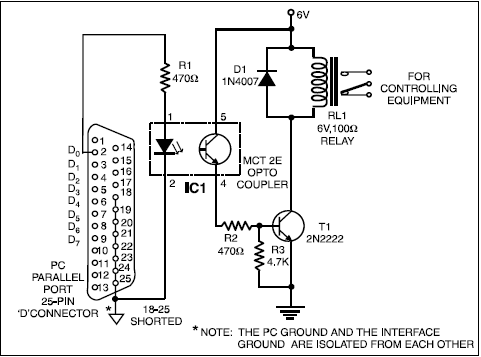Many digital code lock circuits
have been published in this
magazine. In those circuits a
set of switches (conforming to code) are
pressed one by one within the specified
time to open the lock. In some other
circuits, custom-built ICs are used and
positive and negative logic pulses are
keyed in sequence as per the code by
two switches to open the lock.
A low-cost digital code lock circuit
is presented in this article. Here the
keying-in code is rather unique. Six
switches are to be pressed to open the
lock, but only two switches at a time.
Thus a total of three sets of switches
have to be pressed in a particular sequence.
(Of these three sets, one set is
repeated.) The salient features of this
circuit are:
1. Use of 16 switches, which suggests
that there is a microprocessor inside.
2. Elimination of power amplifier
transistor to energise the relay.
3. Low cost and small PCB size.
A. JEYABAL
Simple Low-Cost
Digital Code Lock
An essential property of this electronic
code lock is that it works in
monostable mode, i.e. once triggered,
the output becomes high and remains
so for a period of time, governed by the
timing components, before returing to
the quiescent low state. In this circuit,
timer IC 555 with 8 pins is used. The
IC is inexpensive and easily available.
Its pin 2 is the triggering input pin
which, when held below 1/3 of the supply
voltage, drives the output to high
state. The threshold pin 6, when held
higher than 2/3 of the supply voltage,
drives the output to low state. By applying
a low-going pulse to the reset
pin 4, the output at pin 3 can be
brought to the quiescent low level. Thus
the reset pin 4 should be held high for
normal operation of the IC.
Three sets of switches SA-SC, S1-
S8 and S3-S4 are pressed, in that order,
to open the lock. On pressing the
switches SA and SC simultaneously, capacitor
C3 charges through the potential
divider comprising resistors R3 and
R4, and on releasing these two switches,
capacitor C3 starts discharging through
resistor R4. Capacitor C3 and resistor
R4 are so selected that it takes about
five seconds to fully discharge C3.
Depressing switches S1 and S8 in
unison, within five seconds of releasing
the switches SA and SC, pulls pin 2 to
ground and IC 555 is triggered. The capacitor
C1 starts charging through resistor
R1. As a result, the output (pin
3) goes high for five seconds (i.e. the
charging time T of the capacitor C1 to
the threshold voltage, which is calculated
by the relation T=1.1 R1 x C1 seconds).
Within these five seconds, switches
SA and SC are to be pressed momentarily
once again, followed by the depression
of last code-switch pair S3-S4.
These switches connect the relay to output
pin 3 and the relay is energised.
The contacts of the relay close and the
solenoid pulls in the latch (forming part
of a lock) and the lock opens. The remaining
switches are connected between
reset pin 4 and ground. If any one of
these switches is pressed, the IC is reset
and the output goes to its quiescent
low state. Possibilities of pressing these
reset switches are more when a code
breaker tries to open the lock.
LED D5 indicates the presence of
power supply while resistor R5 is a current
limiting resistor.
The given circuit can be recoded easily
by rearranging connections to the
switches as desired by the user.









































 PARTS LIST
PARTS LIST



